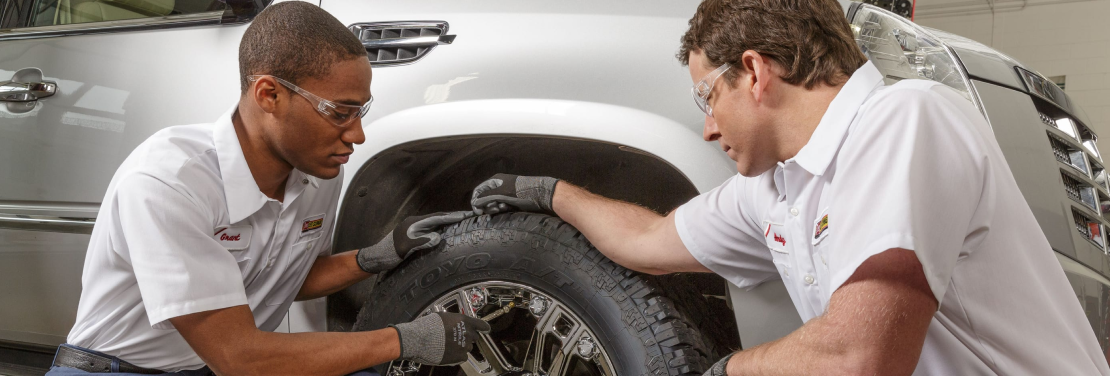Tire Service: The Impact of Climate Condition
When it pertains to ensuring optimum efficiency and security when traveling, understanding the influence of climate condition on tire service is crucial. From scorching warmth to icy roadways, each weather element can dramatically affect tire capability and overall driving experience. By diving right into the results of varying weather condition problems on tires, chauffeurs can get useful insights that may boost their car's efficiency and durability. In this conversation, we will check out the detailed partnership in between weather and tire service, dropping light on the relevance of weather-specific tire upkeep techniques and factors to consider.
Warm and Tire Performance
When subjected to high temperatures, tires experience adjustments in efficiency that can substantially affect car security and handling. The warm produced from prolonged driving or hot weather conditions causes the tire rubber to soften, bring about reduced tread life and boosted wear. As the rubber becomes softer, the tire's grasp on the road reduces, affecting stopping distances and general traction. In extreme instances, too much heat can also create tire blowouts, positioning an extreme security threat to the automobile and its residents.
Moreover, high temperature levels can speed up the process of tire aging, creating the rubber to degrade much more quickly. To minimize the impacts of heat on tire efficiency, chauffeurs ought to regularly examine their tire pressure, revolve tires to make sure even put on, and examine for any kind of indications of damages.
Cold Weather Condition Impacts
Winter problems can have a considerable effect on tire performance and safety and security. As temperatures decline, tire rubber can solidify, leading to reduced grip on icy or snow-covered roadways. In cool climate, tires may additionally shed atmospheric pressure much more swiftly, which can affect handling and gas effectiveness. In addition, cold temperatures can create tire sidewalls to tense, enhancing the risk of damages from potholes or other roadway threats.
To reduce the impacts of cool climate on tires, it is critical to consistently examine tire pressure and inflate them to the manufacturer's recommended degrees. Making use of winter or all-season tires developed for winter conditions can likewise enhance traction and hold on icy or snowy roads - discount tires morris il. Proper tire maintenance, including regular evaluations for wear and damage, comes to be much more crucial during colder months to make certain ideal efficiency and safety
Rainy Conditions Influence
During stormy conditions, tire performance and safety and security can be substantially affected by the wet road surface areas and lowered exposure. The step pattern of tires plays an important duty in maintaining grip on wet roads. Tires with worn-out footsteps are more vulnerable to hydroplaning, where a layer of water develops in between the tire and the roadway surface, causing loss of traction. To battle this, chauffeurs must regularly examine their tires for ample tread depth and think about purchasing tires specifically developed for wet problems.

Snow and Tire Safety
Snow-covered roads pose distinct difficulties for motorists, highlighting the significance of proper tire option and upkeep. When driving in snowy problems, having the right tires can make a considerable distinction in security and efficiency. Winter season tires are made with unique rubber substances and walk patterns to offer much better traction on snow and ice compared to all-season tires. The deeper footsteps and sipes of wintertime tires help grasp the roadway better, decreasing the threat of sliding and sliding.
In addition to making use of winter season tires, it is essential to guarantee they are Continued correctly blown up. Winter can cause tire stress to drop, influencing traction and handling (mopar tire service specials). Regularly inspecting and keeping the right tire stress is crucial for optimum performance in snowy problems

Weather-Related Tire Maintenance
Weather-related tire upkeep encompasses an array of techniques intended at ensuring optimum tire feature and longevity in various climate scenarios. One key aspect of weather-related tire upkeep is tire stress policy. Examining tire step routinely and changing tires when tread wear gets to a certain depth is important for preserving traction and stability in unfavorable climate.
Conclusion
In conclusion, weather condition problems have a considerable impact on tire performance and security (mopar tire service specials). From warm affecting tire stress and wear to chilly weather decreasing grip, it is important to take into consideration the weather condition when preserving and using tires.
In this conversation, we will certainly discover the elaborate partnership in between climate problems and tire solution, dropping light on the relevance of weather-specific tire upkeep practices and factors to consider.
